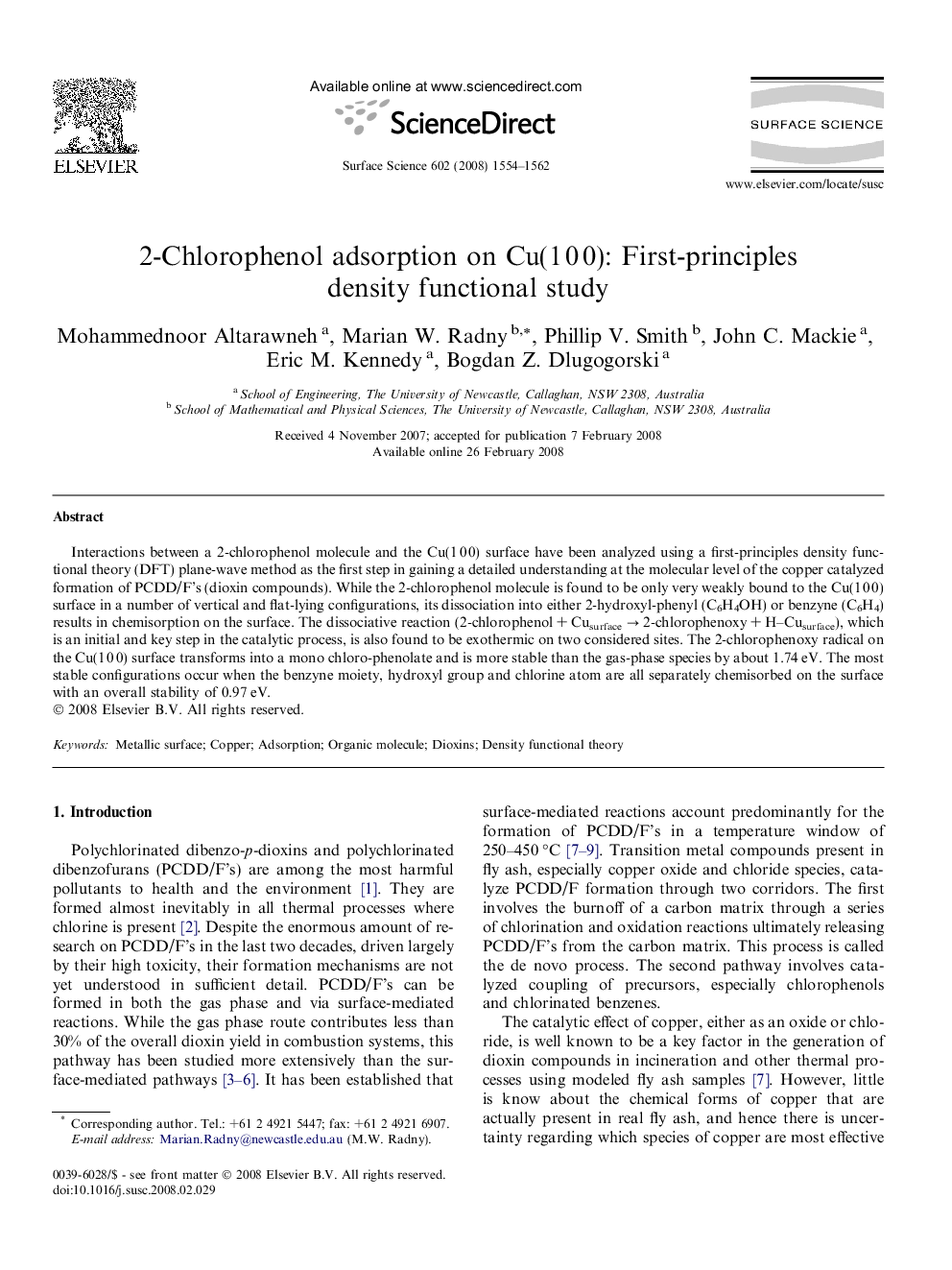| Article ID | Journal | Published Year | Pages | File Type |
|---|---|---|---|---|
| 5424833 | Surface Science | 2008 | 9 Pages |
Abstract
Interactions between a 2-chlorophenol molecule and the Cu(1 0 0) surface have been analyzed using a first-principles density functional theory (DFT) plane-wave method as the first step in gaining a detailed understanding at the molecular level of the copper catalyzed formation of PCDD/F's (dioxin compounds). While the 2-chlorophenol molecule is found to be only very weakly bound to the Cu(1 0 0) surface in a number of vertical and flat-lying configurations, its dissociation into either 2-hydroxyl-phenyl (C6H4OH) or benzyne (C6H4) results in chemisorption on the surface. The dissociative reaction (2-chlorophenol + Cusurface â 2-chlorophenoxy + H-Cusurface), which is an initial and key step in the catalytic process, is also found to be exothermic on two considered sites. The 2-chlorophenoxy radical on the Cu(1 0 0) surface transforms into a mono chloro-phenolate and is more stable than the gas-phase species by about 1.74 eV. The most stable configurations occur when the benzyne moiety, hydroxyl group and chlorine atom are all separately chemisorbed on the surface with an overall stability of 0.97 eV.
Related Topics
Physical Sciences and Engineering
Chemistry
Physical and Theoretical Chemistry
Authors
Mohammednoor Altarawneh, Marian W. Radny, Phillip V. Smith, John C. Mackie, Eric M. Kennedy, Bogdan Z. Dlugogorski,
